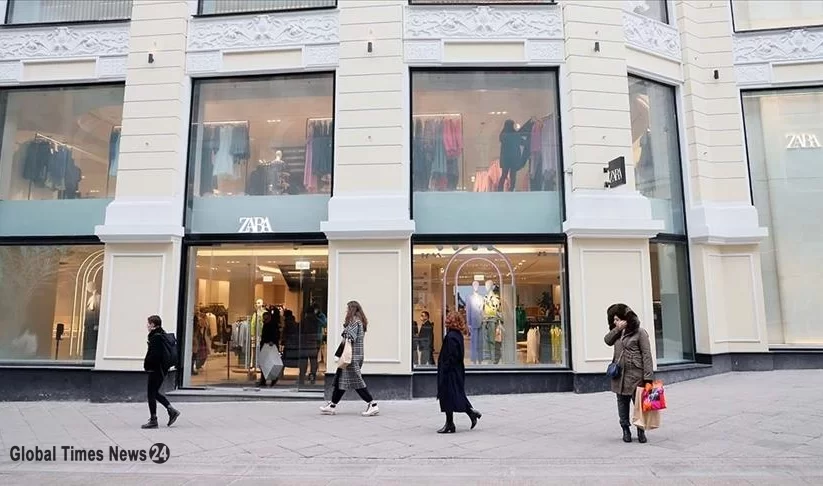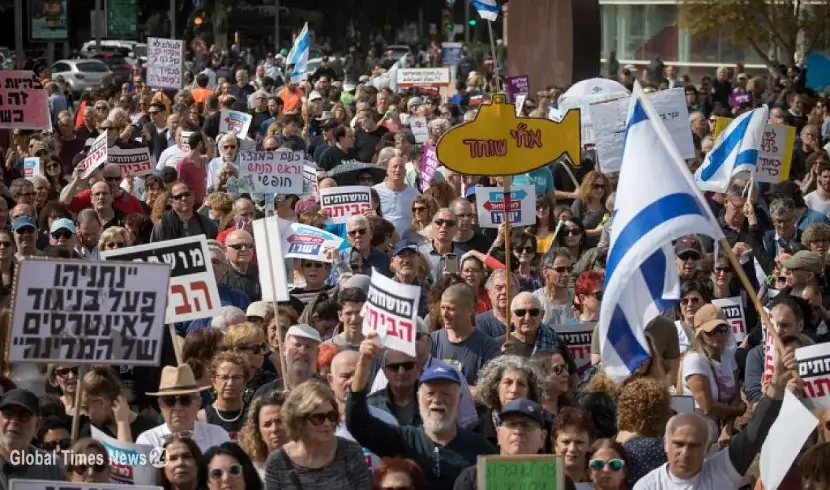Nine Onion-shaped Domes, the Landmark of Moskow!
Table of Contents (Show / Hide)

Domes decorated in swirling patterns and bright, candy-striped colors. The spires and arches of the structure are decorated with bricks and ceramics in various designs, giving it a lively appearance. Over the years, the renowned church’s colors changed from its original white stone and red brick construction. Where is this place?
This is Iconic Builds, the Cathedral of Vasily the Blessed, commonly known as Saint Basil’s Cathedral.
As a thank-you gift for his military victory over the khanates of Kazan and Astrakhan, Tsar Ivan IV - The Terrible had Saint Basil the Blessed, also known as Pokrovsky Cathedral, Svyatoy Vasily Blazhenny, or Pokrovsky Sobor, built on Red Square in Moscow between 1554 and 1560. Until Ivan the Great Bell Tower surpassed St. Basil’s, which had a height of 156 feet or 47 meters in the capital, St. Basil’s was the tallest building. No one is certain who exactly designed St Basil’s Cathedral. However, it is generally considered to be Russian architects Barma and Postnik, who may have been one person. But, according to a well-known myth, it was constructed by an Italian architect who was blinded in order to prevent him from ever producing something comparable or equal.
Russia’s St. Basil’s Cathedral is now recognizable around the world. The cathedral, which combines eleven different churches into a single ensemble and is located next to the Moscow Kremlin, is a crucial component of Moscow’s urban landscape. It was planned to rebuild the cathedral with eight separate churches circling a larger center temple. Each church was dedicated to remembering significant occasions in Russian religious or political history. St. Basil’s Cathedral was finished in July 1561 and was dedicated to the Day of the Holy Virgin’s Protection. The cathedral’s chaotic-looking features actually conceal a clear layout with nine primary chapels. The name-bearing Church of the Intercession of the mother of God is located inside the tall, tent-roofed tower in the center.
The Church of Saints. Cyprian and Justina, Church of the Holy Trinity, Church of the Icon of Saints. Nicholas the Miracle Worker and Church of the Entrance of the Lord into Jerusalem are the four chapels with octagonal towers topped by the four largest domes. There are also four smaller chapels between them. While the churches were constructed of red brick, a relatively new material, the foundations were constructed of white stone, as was customary in medieval Moscow. While using stone walls because of the location, they were ornamented with a brickwork pattern painted over stucco. The builders were delighted by the versatility of the new technology and employed red bricks as a decorative medium both inside and out, leaving as much brickwork open as possible.
The floral embellishments are a later addition; previous Russian architecture’s use of sculpture and spiritual symbols is absolutely absent. Some architectural historians thought St. Basil’s was a fusion of Byzantine and perhaps Asian influences due to the emergence of vernacular wooden churches in Russia. The St. Basil’s Cathedral’s interior, which features sparse ornamentation and constrained passageways, significantly contrasts with its facade. Oil paintings, frescoes, portraits, landscape paintings, iconostasis with more than 400 works from Moscow and Novgorod iconography from the 16th to the 19th century, and priceless artifacts from the church and imperial family are just a few of the beauties to be found inside the cathedral.
A maze of vaulted interior corridors and galleries connecting the cathedral’s chapels is decorated from floor to ceiling with vibrant geometric patterns and natural motifs. The Soviets recognized the church as a significant and irreplaceable national monument. After major repairs, it was transformed into a museum of architecture, history, politics, and religion. St. Basil’s managed to avoid destruction under Stalin’s rule, unlike many other historic structures. The building has been through a lot of disasters, as well as a lot of renovations throughout history.
Here are some of the historical highlights: After burning down in 1583, the old Trinity Church was rebuilt by 1593. The ninth sanctuary, which was dedicated to Basil Fool for Christ, was added next to the sanctuary of the Three Patriarchs in the northeast in 1588. In 1680–1683, the second and most important wave of renovation and extension took place. The nine churches kept their appearance, but Nikolay Brunov erected a composite church out of a “old” building, and a separate work that included the “new” Trinity Church since the improvements to the ground-floor arcade and the first-floor platform were so significant. In the 1810s, restoration began with the replacement of the roof of the domes. When the tin roof of the main tent was removed, many original tiles were missing, and others were discolored; After a long discussion, the entire set of tiles on the tent roof was replaced with new ones. When the rebuilt St. Alexander Svirsky sanctuary was opened in September 2008, the final round of renovations was finished. A portion of the structure is still in use as a museum today, and since 1991, the Russian Orthodox Church has periodically used it for services.
URL :
News ID : 2135


 100 years before the dinosaurs
100 years before the dinosaurs
 In a tit for tat move, Russia ‘blacklists’ 398 members of US Congress
In a tit for tat move, Russia ‘blacklists’ 398 members of US Congress
 UNEP Report: World Wasted 1 Billion Meals Daily in 2022
UNEP Report: World Wasted 1 Billion Meals Daily in 2022
 Google Fined by Moscow Court for Failure to Remove "False Information"
Google Fined by Moscow Court for Failure to Remove "False Information"
 US-UK Economic Partnership Announced, No Free Trade Deal Yet
US-UK Economic Partnership Announced, No Free Trade Deal Yet
 The Khalifa Tower, based on the Hymenocallis desert flower!
The Khalifa Tower, based on the Hymenocallis desert flower!
 Major sports events of 2022
Major sports events of 2022
 The mystery of Stonehenge!
The mystery of Stonehenge!
 Intensifying ethnic polarity in Israel reaches deadline of election campaign
Intensifying ethnic polarity in Israel reaches deadline of election campaign
 Ten warning signs that indicates you need Vitamin D
Ten warning signs that indicates you need Vitamin D
